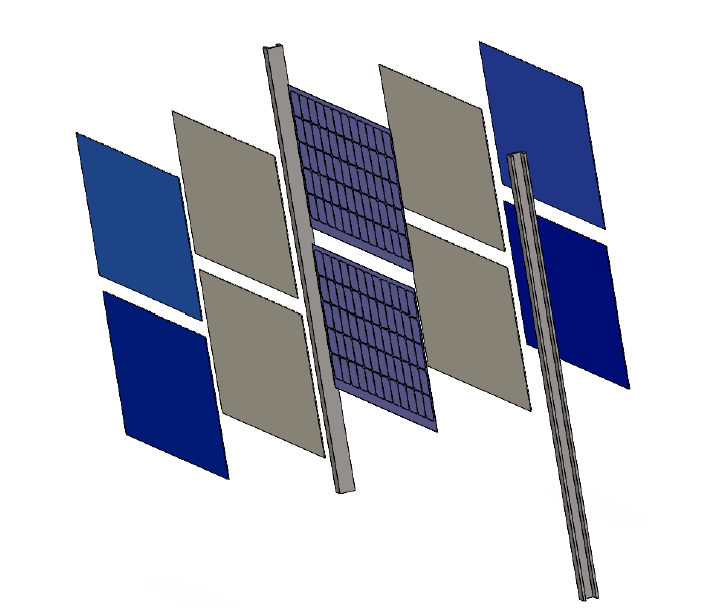Scientists at Mälardalen University in Sweden have developed a computational fluid dynamics (CFD) model that facilitates the analysis of microclimates in vertical PV projects.
“Models of agrivoltaic (AV) systems will become frequently used for new AV system designs as well as decision-making as you can analyze/predict the microclimatic changes dependent on location and AV system solution,” researcher Sebastian Zainalli told pv magazine.
CFD simulations are used to solve complex equations about the flow of solids and gases through and around bodies, which can be used to analyze microclimates within agrivoltaic systems. The model was built using Solidworks computer-aided design software.
The researchers looked at a vertical agrivoltaic system with 30 bifacial monocrystalline PV modules with an east-west orientation in Västerås, Sweden. The system consists of three rows with 10 meters between them, where pasture grass is grown.
The scientists gathered data on the ambient temperature, global and diffuse horizontal radiation, and wind with four different sensors. They used a thermal camera to measure the temperature of the modules.
The CFD model showed PV module temperate estimation errors in the order of 0 C to 2 C, and ground temperature errors in the order of 0 C to 1 C.
“The vertical bifacial PV module temperature is hard to measure as you cannot easily put a sensor onto the module as it would create hotspots. Therefore, hourly thermal camera readings have been used to get an accurate comparison,” Zainali explained. “The model’s estimation errors are more accurate than the measured vertical bifacial PV module temperature obtained with monofacial reference cells on the rear and front sides due to differences in characteristics compared to the bifacial module.”
They also considered soil temperature to validate the CFD model. They claim the model correctly predicts that soil temperature slowly increases during the day.
“The CFD model had a temperature error of less than 1 C and it could be seen that the increase in temperature is extremely similar to measured data during the day,” said Zainali.
The results also show that the incident solar irradiance estimates from the CFD model are similar to those measured in Västerås, but the model generally underestimates the peak solar irradiance in cloudy weather conditions. The academic also observed a 38% decrease in solar radiation intensity in the ground areas shaded by the vertical PV modules.
“From these validations, we can see that our developed model has similar microclimatic variation as measurements,” Zainali said, noting that the model can be adapted to study other agrivoltaic systems designs and geographical locations. He noted that it is possible to analyze installations with fixed structures and trackers, although the latter adds more complexity to the modeling and therefore requires more time to be studied.
This content is protected by copyright and may not be reused. If you want to cooperate with us and would like to reuse some of our content, please contact: editors@pv-magazine.com.



7 comments
By submitting this form you agree to pv magazine using your data for the purposes of publishing your comment.
Your personal data will only be disclosed or otherwise transmitted to third parties for the purposes of spam filtering or if this is necessary for technical maintenance of the website. Any other transfer to third parties will not take place unless this is justified on the basis of applicable data protection regulations or if pv magazine is legally obliged to do so.
You may revoke this consent at any time with effect for the future, in which case your personal data will be deleted immediately. Otherwise, your data will be deleted if pv magazine has processed your request or the purpose of data storage is fulfilled.
Further information on data privacy can be found in our Data Protection Policy.